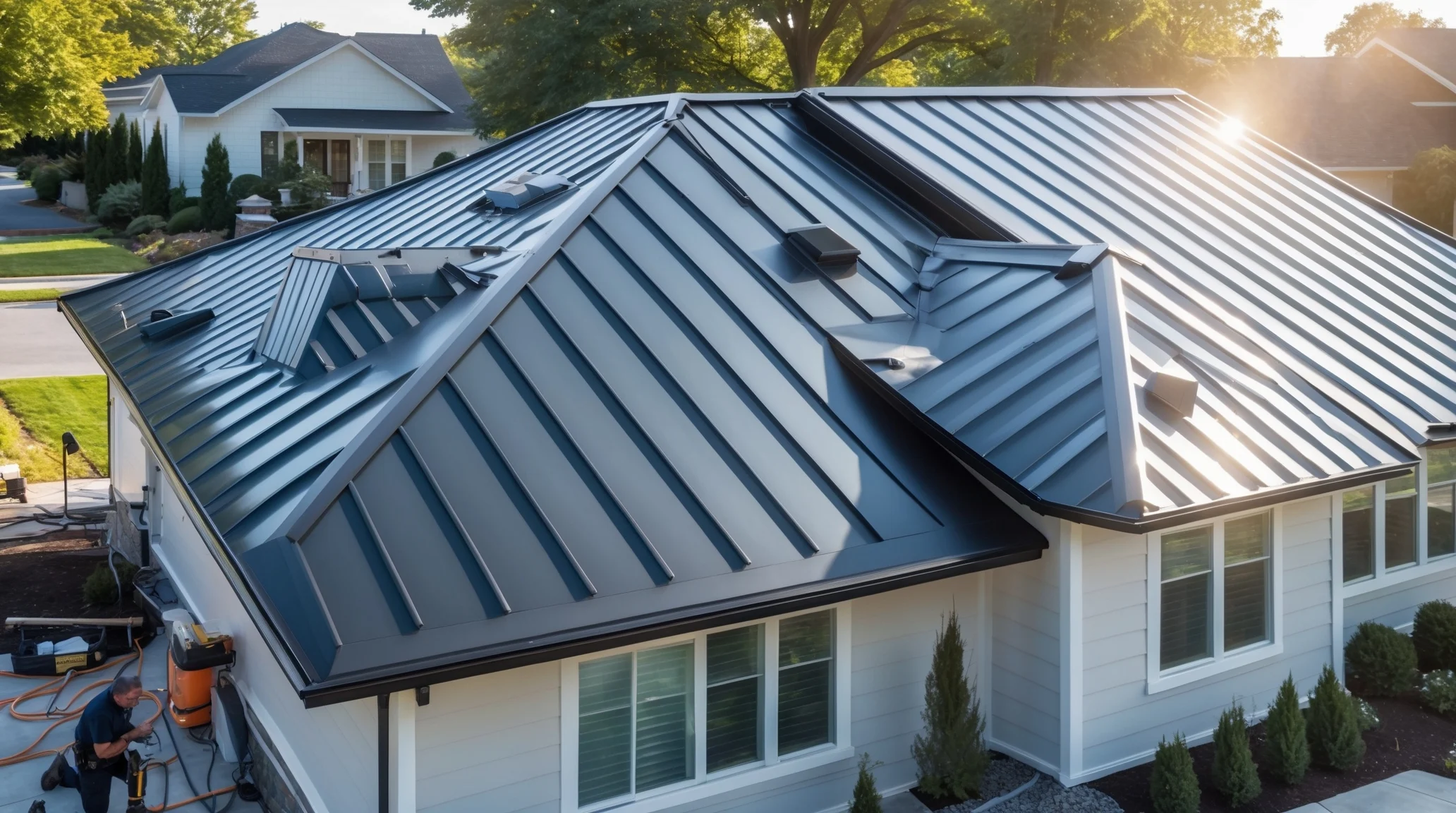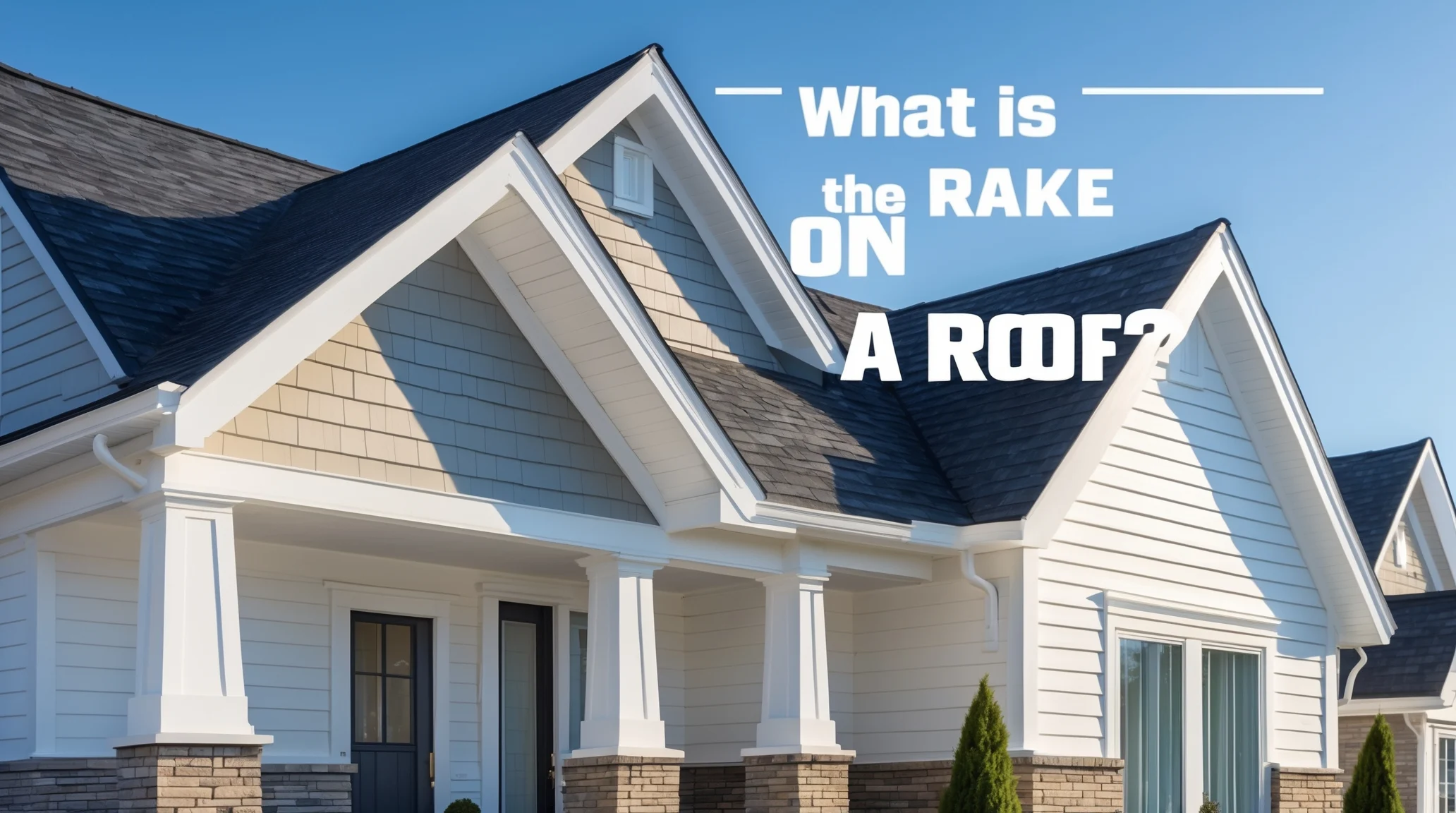Roof systems are made up of many parts that work together to keep a home safe. One important piece that many people overlook is the roof jack. Homeowners often ask: what is a roof jack, and why does it matter? The answer is simple. A roof jack is a protective cover that surrounds vents, pipes, or other openings on a roof. It works with flashing, insulation, and underlayment to prevent leaks and damage. In this guide, we explain what roof jacks are, how they work, where they are used, and why they are essential for every type of roof.
Introduction to Roofing Systems and Their Key Components
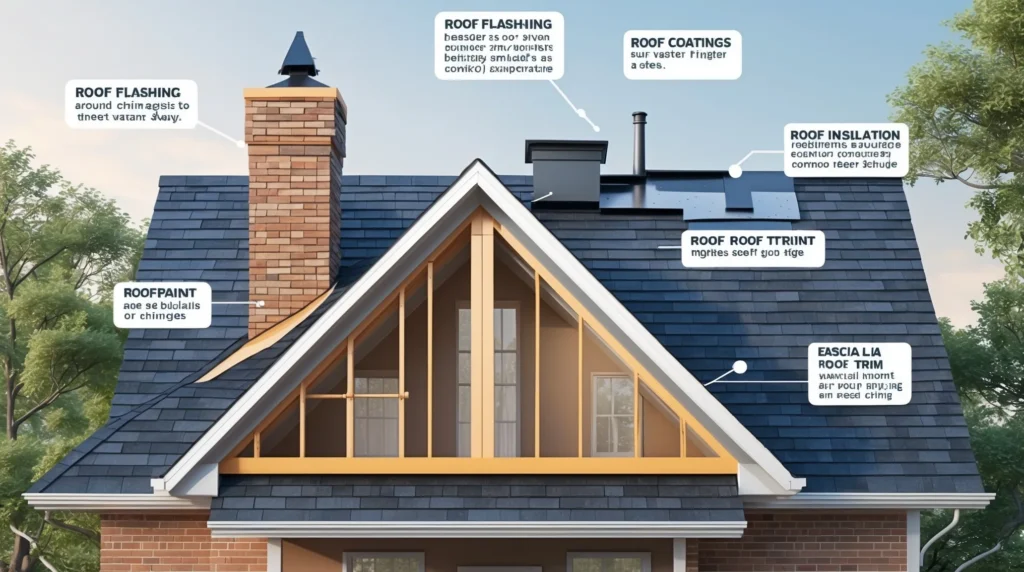
A strong roof does more than cover a house. It provides insulation, keeps water out, and protects the structure from wind and weather. To do this, roofs rely on many parts such as roof flashing, roofing underlayment, and roof insulation. Roof flashing is a thin layer of material, usually metal, placed around joints or openings to direct water away. Roofing underlayment is the barrier installed under shingles or panels to keep moisture from seeping into the structure. Roof insulation controls temperature and reduces energy costs. When combined with elements like roof coatings, roof paint, and fascia roof trim, these parts create a complete shield.
Every part has a job, and ignoring one piece can weaken the whole system. This is why roof jacks, although small, are critical to the health of a roof.
Why Homeowners Should Understand Roof Parts and Maintenance
Most homeowners do not think about roofing until problems appear. Yet, understanding the basics, such as reroof projects, shingle roof repair, and complete roof replacement, can help prevent costly damage. For example, a storm-damaged roof repair might cost more if the roof jack is missing or broken. Roof storm damage assessment often reveals leaks around pipes, and many of these issues start where roof jacks were not properly installed.
Learning terms like composition roof, fascia roof, or roof coatings may seem technical, but this knowledge helps homeowners ask the right questions when hiring a roof inspection contractor. A small detail like roof flashing or a roof jack can be the difference between a minor fix and a full reroof.
What Is a Roof Jack and Why Does It Matter
So, what is a roof jack? In simple terms, it is a type of flashing that covers and seals areas where pipes or vents pass through the roof. Without it, rainwater and snow could easily slip through the gaps and cause roof damage inside the home. Roof jacks are made of metal, plastic, or rubber. They fit tightly around the pipe and extend outward under shingles or panels. This creates a watertight barrier. Roof jacks are common on both residential roof repair projects and commercial roofing maintenance.
The reason they matter is clear: without them, homes face leaks, mold, and even structural problems. A roof jack may look like a small collar on the roof, but it plays a major role in protecting the entire house.
How Roof Jacks Work with Flashing and Roofing Underlayment
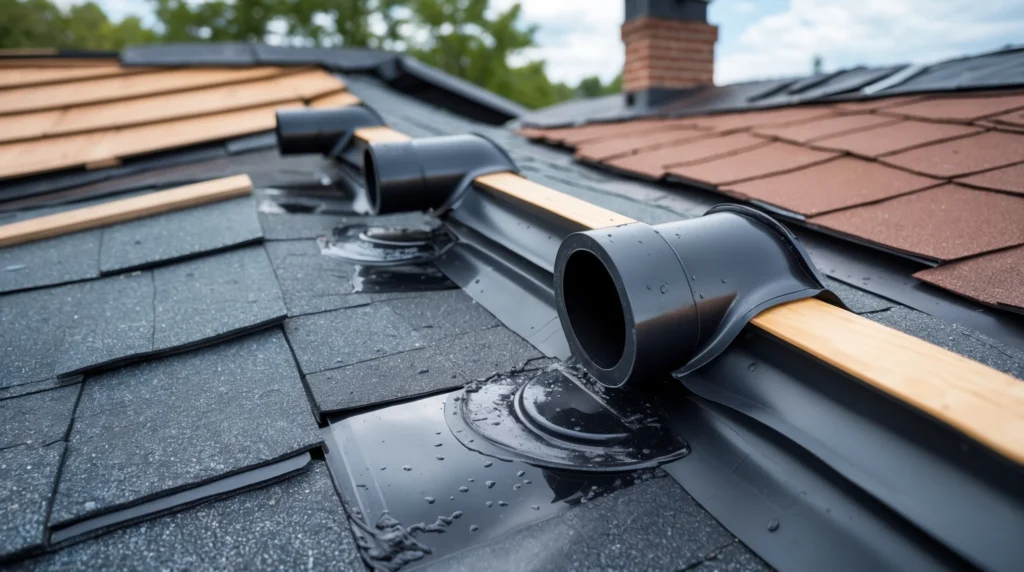
Roof jacks do not work alone. They function best when paired with roof flashing and roofing underlayment. Flashing directs water down the slope, while underlayment catches any that slips past the shingles. The roof jack seals the space around the pipe, creating a three-part defense system. For example, in a new roof installation, the contractor places roofing underlayment first. Then flashing is installed around sensitive areas. The roof jack is secured over pipes before shingles are laid over the edges. This ensures that rainwater flows away smoothly.
Roof coatings and roof paint can add another layer of protection. They seal small gaps and extend the life of the materials. Together, these parts keep the roof strong through storms and seasonal changes.
Common Roof Types Where Roof Jacks Are Installed
Roof jacks are used on many different roof types. On a composition roof, they are hidden under shingles. On a hip roof or a gable-on-gable roof, they are installed along the slopes where pipes emerge. On a gambrel roof, they appear on the steep upper sections. Metal roof systems also use roof jacks, though the installation method may differ. Metal roofing repair often includes resealing the flashing and roof jacks to keep leaks away. Flat roof repair may require special jacks with wider bases to handle water pooling.
No matter the roof design, residential or commercial, roof jacks are a standard part of keeping it watertight.
Roof Jacks in Action: Protecting Against Storm Damage
Storms are one of the biggest threats to roofs. High winds, heavy rain, and hail can loosen shingles or tear away flashing. Roof jacks help by sealing pipe openings, which are often the weakest spots. During a roof storm damage assessment, inspectors often check the condition of roof jacks first. If they are cracked or loose, water may already be leaking inside. Storm damage roof repairs almost always include fixing or replacing jacks.
Emergency roofing services are often called after storms. In many cases, quick action like sealing a damaged roof jack prevents the need for a complete roof replacement later.
Repairing the Roof: When to Replace or Reroof with New Jacks
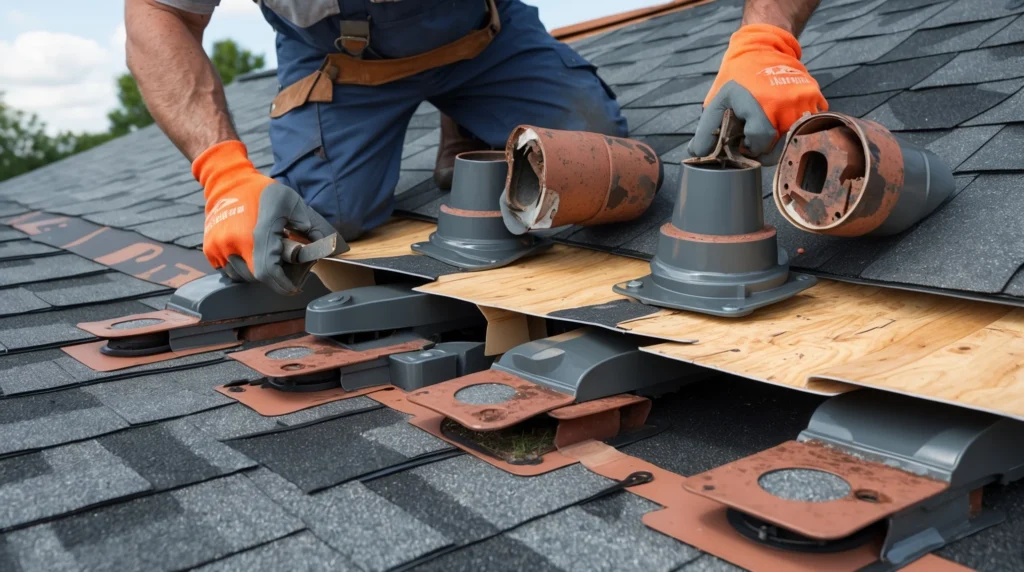
Roof jacks, like other parts of the roof, wear out over time. Sunlight can dry and crack rubber seals, while rust can weaken metal parts. When repairing the roof, contractors often replace old jacks to ensure the system stays secure. Shingle roof repair projects may reveal leaks around old jacks. In reroof jobs, all roof jacks are replaced to match the new materials. A complete roof replacement always includes installing new jacks, flashing, and underlayment.
Ignoring roof jack replacement can shorten the life of a roof. Even small leaks can lead to mold, wood rot, or damaged insulation.
Professional Services: Residential Roof Repair and Commercial Roof Care
Both homeowners and business owners need reliable roof services. Residential roof repair often includes fixing flashing, repairing the roof after storms, and checking roof jacks. Commercial roof repair services cover larger systems, but the principles are the same. Commercial roofing maintenance usually includes inspections, flat roof repair, and replacing worn parts like jacks or coatings. Companies that specialize in emergency roof repair service often highlight their ability to quickly seal leaks around roof penetrations.
Elements Home Exteriors provides both residential and commercial services, showing how important local expertise is in protecting properties.
Cost Factors: Roof Inspection, Repairs, and Financing Options
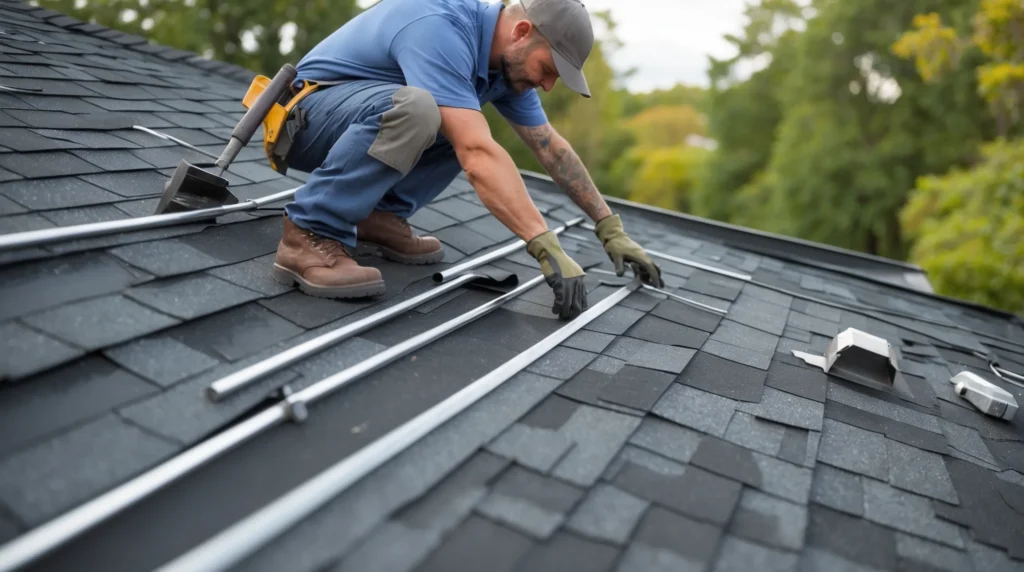
Roof costs depend on the scope of work. A roof inspection cost is usually affordable and helps spot problems early. A roof inspection contractor may recommend replacing a few shingles, sealing a jack, or applying roof coatings. If bigger problems are found, a roof quote may include reroof or complete roof replacement. Roof insurance claims can often cover damage from storms, including the cost of new jacks.
For homeowners worried about budgets, roof financing options make it easier to handle repairs. Whether it is a small fix or a full replacement, planning protects both the home and the wallet.
Local Expertise in Fairfax County, VA: Elements Home Exteriors
When it comes to roofing, local knowledge makes a difference. In Fairfax County, VA, Elements Home Exteriors is trusted for its skill and attention to detail. They understand the region’s weather patterns and the importance of preparing roofs for storms, snow, and seasonal changes.
This experience allows them to install and repair roof jacks, flashing, and insulation with confidence. Their team handles everything from small shingle roof repair to complete roof replacement. With their support, homeowners can rest easy knowing every part of the roof is protected.
Conclusion: Keeping Your Roof Protected with the Right Components
Roof systems are complex, but every piece matters. Roof jacks may seem small, yet they prevent leaks, protect insulation, and extend the life of the roof. Together with flashing, underlayment, and coatings, they keep homes and businesses safe from water damage. Regular inspections, timely repairs, and trusted contractors ensure that roof jacks stay strong. Whether it is a new roof, reroof, or storm damage repair, attention to detail saves money in the long run.
If you want to keep your roof secure, trust experts who understand every part from shingles to jacks. Protecting your home starts with the right care.
Need help with your roof today? Call a professional you can trust and keep your home safe for years to come.

